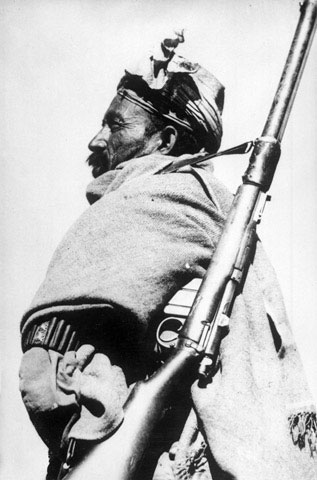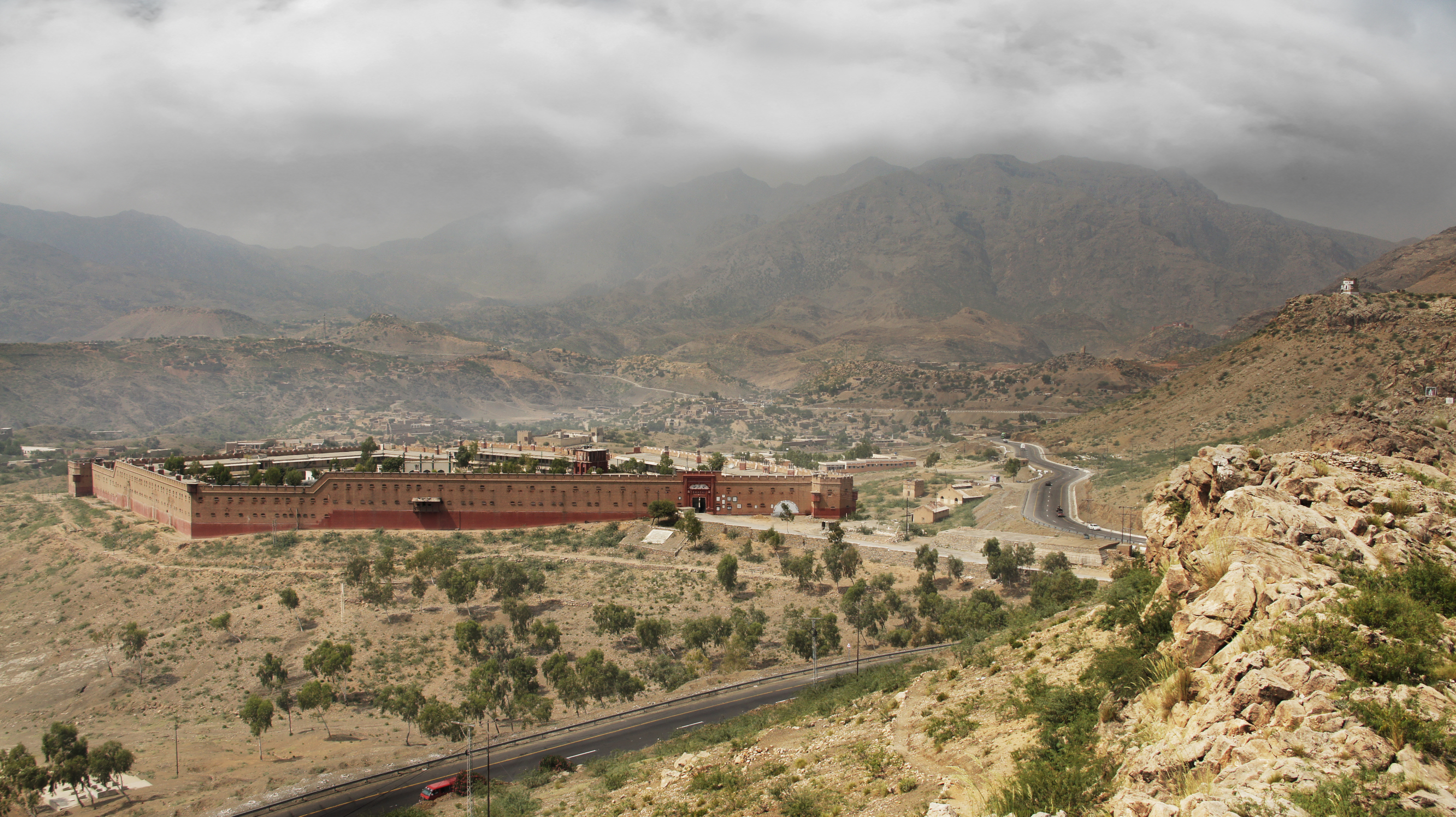Khyber Rifles on:
[Wikipedia]
[Google]
[Amazon]
The Khyber Rifles are a paramilitary regiment, forming part of the
 During the period of British rule, the Khyber Rifles was one of eight "Frontier Corps" or paramilitary units recruited from the tribesmen of the North West Frontier, serving as auxiliaries for the regular
During the period of British rule, the Khyber Rifles was one of eight "Frontier Corps" or paramilitary units recruited from the tribesmen of the North West Frontier, serving as auxiliaries for the regular 

 In August 1947, upon partition, the Khyber Rifles and the other Frontier Corps regiments were transferred to Pakistan. In addition to its traditional policing duties in the tribal areas of the Khyber region, the Khyber Rifles provided detachments to serve in
In August 1947, upon partition, the Khyber Rifles and the other Frontier Corps regiments were transferred to Pakistan. In addition to its traditional policing duties in the tribal areas of the Khyber region, the Khyber Rifles provided detachments to serve in
Journey to Khyber Rifles: Commandant's Diary 2005-2008
{{Frontier Corps * Military units and formations of British India Regiments of the Frontier Corps
Pakistan
Pakistan ( ur, ), officially the Islamic Republic of Pakistan ( ur, , label=none), is a country in South Asia. It is the world's List of countries and dependencies by population, fifth-most populous country, with a population of almost 24 ...
i Frontier Corps Khyber Pakhtunkhwa (North). The Rifles are tasked with defending the border with Afghanistan
Afghanistan, officially the Islamic Emirate of Afghanistan,; prs, امارت اسلامی افغانستان is a landlocked country located at the crossroads of Central Asia and South Asia. Referred to as the Heart of Asia, it is borde ...
and assisting with law enforcement in the districts adjacent to the border. Raised in the late nineteenth century, the regiment provided the title and setting for the widely read novel, ''King of the Khyber Rifles
''King of the Khyber Rifles'' is a novel by British writer Talbot Mundy. Captain Athelstan King is a secret agent for the British Raj at the beginning of the First World War. Heavily influenced both by Mundy's own unsuccessful career in India ...
'', and is the oldest regiment of the Corps. The regiment has a 2020/21 budget of and is composed of seven battalion-sized wings.
History
 During the period of British rule, the Khyber Rifles was one of eight "Frontier Corps" or paramilitary units recruited from the tribesmen of the North West Frontier, serving as auxiliaries for the regular
During the period of British rule, the Khyber Rifles was one of eight "Frontier Corps" or paramilitary units recruited from the tribesmen of the North West Frontier, serving as auxiliaries for the regular British Indian Army
The British Indian Army, commonly referred to as the Indian Army, was the main military of the British Raj before its dissolution in 1947. It was responsible for the defence of the British Indian Empire, including the princely states, which cou ...
. Raised in the early 1880s as the Khyber Jezailchis; (a jezail being a type of home made musket
A musket is a muzzle-loaded long gun that appeared as a smoothbore weapon in the early 16th century, at first as a heavier variant of the arquebus, capable of penetrating plate armour. By the mid-16th century, this type of musket gradually di ...
), the Khyber Rifles recruited from Afridi tribesmen, with British commanders seconded from regular British Indian army
The British Indian Army, commonly referred to as the Indian Army, was the main military of the British Raj before its dissolution in 1947. It was responsible for the defence of the British Indian Empire, including the princely states, which cou ...
regiments. Subordinate officers were Afridis. The first commandant was Sir Robert Warburton
Colonel Sir Robert Warburton (11 July 1842 – 22 April 1899) was an Anglo-Afghan soldier and administrator. Half-Afghan and proficient in Pashtu, he served for many years as British political officer in charge of the Khyber Pass, a region of s ...
, son of an Anglo-Irish soldier Robert Warburton of the Bengal Artillery and his wife Shah Jehan Begum, an Afghan
Afghan may refer to:
*Something of or related to Afghanistan, a country in Southern-Central Asia
*Afghans, people or citizens of Afghanistan, typically of any ethnicity
**Afghan (ethnonym), the historic term applied strictly to people of the Pash ...
princess. Sir Robert remained the commandant until his retirement in 1899. His deputy, Colonel Sir Aslam Khan Sadozai, the first Muslim
Muslims ( ar, المسلمون, , ) are people who adhere to Islam, a monotheistic religion belonging to the Abrahamic tradition. They consider the Quran, the foundational religious text of Islam, to be the verbatim word of the God of Abrah ...
commandant, succeeded him. Then, the deputy to Colonel Sir Aslam Khan Sadozai was Malik Afridi Khan of Mulazai. Although the deputy, Malik Afridi Khan spent most of his time as the acting in charge of the Khyber Rifles due to the extensive leave of Sir Aslam.
19th Century campaigns
The regiment saw active service in the Black Mountain expeditions of 1888 and 1891, during a period when the Khyber Pass itself remained peaceful. In August 1897 however, the Khyber Afridi tribes rose and the three forts garrisoned by the Khyber Rifles were overrun, the survivors falling back to Jamrud. It took four months and forty-four thousand troops for the British to retake the Khyber Pass. The Khyber Rifles were reconstituted and resumed their garrisons atLandi Kotal
Lanḍī Kōtal ( ps, لنډي کوتل, ur, ) or Lwargai ( ps, لواړګی ''Lwāṛgai'') is a town in the Khyber Pakhtunkhwa province of Pakistan, and the administrative capital of Khyber District. It was one of the largest towns in the form ...
, Fort Maude and Ali Masjid
Ali Masjid (Pashto and ) is the narrowest point of the Khyber Pass. It is located in Khyber District of Khyber Pakhtunkhwa, Pakistan. It is around east of the city of Landi Kotal (West of Peshawar) and has an elevation of . The width of the Khy ...
.

Disbandment and re-establishment
During the Third Anglo-Afghan War (1919), the loyalty of the Khyber Rifles was put under heavy strain and there were a number of desertions. The regiment was therefore disbanded as unreliable. Of the serving personnel 1,180 opted to be discharged, while smaller numbers transferred to a military police battalion or were formed into a newly raised Khyber Levy Corps. The Khyber Rifles was however reconstituted from Afridi veterans ofWorld War II
World War II or the Second World War, often abbreviated as WWII or WW2, was a world war that lasted from 1939 to 1945. It involved the World War II by country, vast majority of the world's countries—including all of the great power ...
in 1946, with its headquarters at Landi Kotal. The commander of the reborn regiment was himself an Afridi, Sharif Khan.
 In August 1947, upon partition, the Khyber Rifles and the other Frontier Corps regiments were transferred to Pakistan. In addition to its traditional policing duties in the tribal areas of the Khyber region, the Khyber Rifles provided detachments to serve in
In August 1947, upon partition, the Khyber Rifles and the other Frontier Corps regiments were transferred to Pakistan. In addition to its traditional policing duties in the tribal areas of the Khyber region, the Khyber Rifles provided detachments to serve in Kashmir
Kashmir () is the northernmost geographical region of the Indian subcontinent. Until the mid-19th century, the term "Kashmir" denoted only the Kashmir Valley between the Great Himalayas and the Pir Panjal Range. Today, the term encompas ...
and East Pakistan
East Pakistan was a Pakistani province established in 1955 by the One Unit Policy, renaming the province as such from East Bengal, which, in modern times, is split between India and Bangladesh. Its land borders were with India and Myanmar, wit ...
. The regiment is currently involved in tracking down fugitives and terrorists.
Locations
The headquarters of the Khyber Rifles were atLandi Kotal
Lanḍī Kōtal ( ps, لنډي کوتل, ur, ) or Lwargai ( ps, لواړګی ''Lwāṛgai'') is a town in the Khyber Pakhtunkhwa province of Pakistan, and the administrative capital of Khyber District. It was one of the largest towns in the form ...
. Its prime role was to guard the Khyber Pass
The Khyber Pass (خیبر درہ) is a mountain pass in the Khyber Pakhtunkhwa province of Pakistan, on the border with the Nangarhar Province of Afghanistan. It connects the town of Landi Kotal to the Valley of Peshawar at Jamrud by traversing p ...
. The three main garrisons of the regiment were Landi Kotal, at the western end of the Pass, Fort Maude to the east, and Ali Masjid
Ali Masjid (Pashto and ) is the narrowest point of the Khyber Pass. It is located in Khyber District of Khyber Pakhtunkhwa, Pakistan. It is around east of the city of Landi Kotal (West of Peshawar) and has an elevation of . The width of the Khy ...
in the centre.
Insignia and uniform
The badge of the Corps comprised two crossed Afghan daggers with the words KHYBER above and RIFLES below. While the Indian Army as a whole was noted for its colourful and elaborate dress uniforms prior to 1914, the various units of the Frontier Corps wore only plainkhaki drill
Khaki drill (KD) is the British military term for a type of fabric and the military uniforms made from them.
History
Khaki colour uniforms were first introduced in 1848 in the British Indian Army Corps of Guides. As well as the Corps of Gui ...
uniforms and turban
A turban (from Persian دولبند, ''dulband''; via Middle French ''turbant'') is a type of headwear based on cloth winding. Featuring many variations, it is worn as customary headwear by people of various cultures. Communities with promin ...
s.
Units
* Headquarters Wing * 101 Wing * 102 Wing * 103 Wing * 104 Wing * 105 Wing * 106 Wing * 107 Wing * Field BatterySee also
*King of the Khyber Rifles
''King of the Khyber Rifles'' is a novel by British writer Talbot Mundy. Captain Athelstan King is a secret agent for the British Raj at the beginning of the First World War. Heavily influenced both by Mundy's own unsuccessful career in India ...
(1919 novel)
* Shagai Fort
* Civil Armed Forces
* Law enforcement in Pakistan
References
Further reading
* Chevenix, Charles. "Frontier Scouts". Cape, London 1985External links
Journey to Khyber Rifles: Commandant's Diary 2005-2008
{{Frontier Corps * Military units and formations of British India Regiments of the Frontier Corps